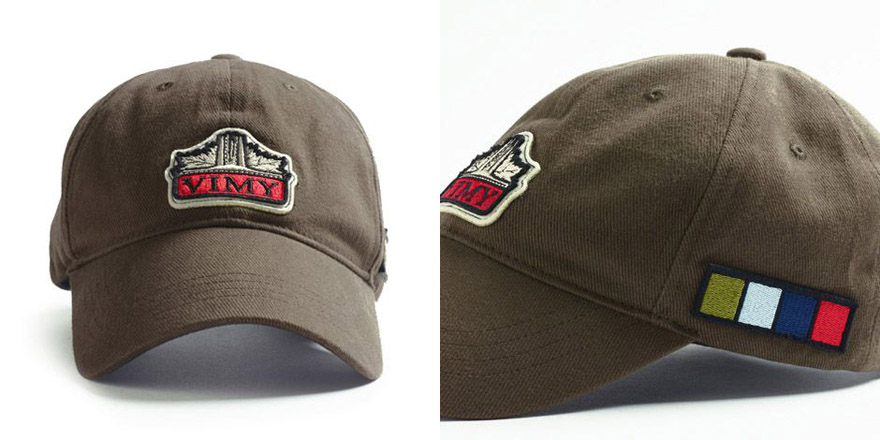The Battle of Vimy Ridge
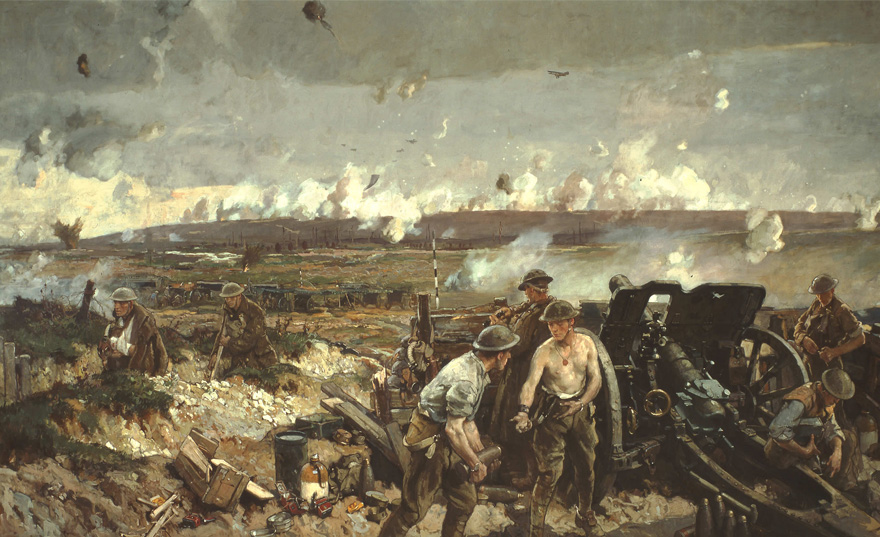
During the Great War, one of the most crucial moments for Canada was between April 9th to April 12 1917 in what is known today as the Battle of Vimy Ridge. It was the first time that such a large-scale operation was assigned to a Canadian commander. It was also the first time that all the four divisions of the Canadian Expeditionary Force would fight on the same battlefield
The main objective for this battle was to gain the control of the Vimy Ridge area, a natural elevated position that was under German control since 1914. This strategic location was hard to retake as the landscape was providing an excellent defense. Since its fall to the invader, 150,000 French ended up killed, wounded or captured while trying to take it back. In 1917, the impossible task to retake this position was given to the Lieutenant-General Sir Julian Byng.
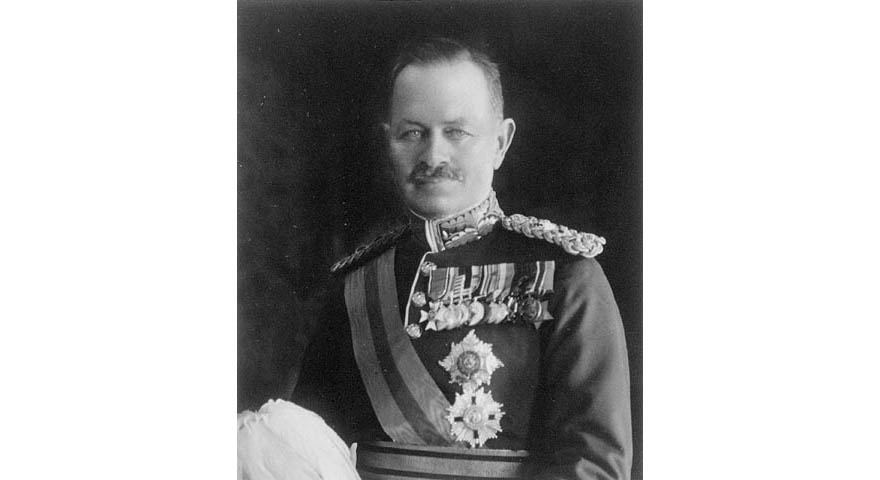
Lieutenant-General Sir Julian Byng, the right man, at the right place and at the right time.
To fulfill his mission, Byng was put in command of the four divisions of the Canadian Expeditionary Force as well as the artillery, engineer and labour units from the British 5th Division. Byng also took the time to find solutions for what went wrong during the Battle of la Somme. One of the main points he worked on was the ineffectiveness of the support artillery in the removal of barbed wire. So he picked new types of shells able to explode on impact and thus clearing the path for the infantry. The artillery was also ordered to shoot 100 meters in front of the advancing infantry to support them during their progression as they hopped from one trenchline to the next. To avoid getting his troops lost in the no man’s land, Byng gave them 40 000 maps and had a model of the battlefield built so they could study it. In addition, each man was instructed about the different objectives near their own, so they could help each other and adapt themselves to the battle. To help furthermore, numerous tunnels were dug to prepare the battlefield. Some of those tunnels were used to safely bring troops closer to the front while others served to undermine the main German defensive positions. Lastly, to help the men to secure the captured ground without carrying heavy equipment, he trained a part of the soldiers to use German machine guns.
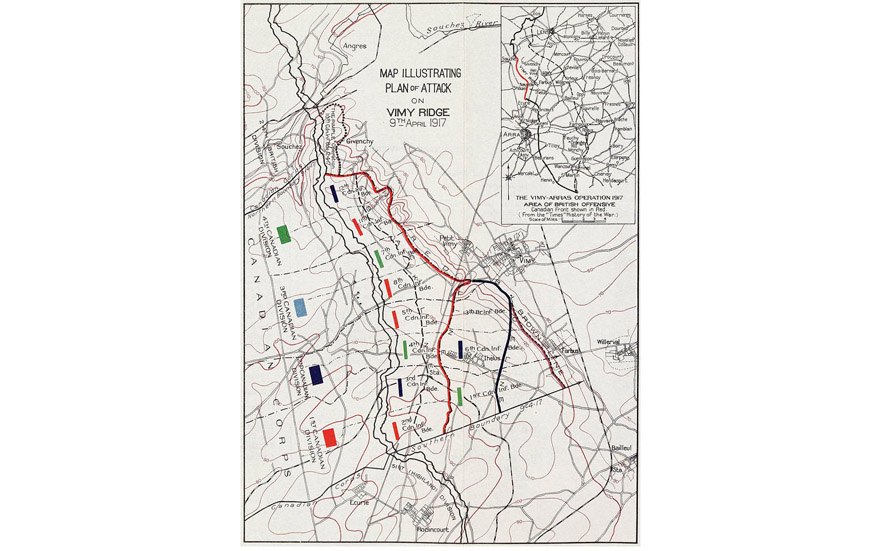
The battle plan for the area. The four colors of each division of the Canadian Expeditionary Force can be seen on this.
When the attack started on April 9th with the detonation of the underground mines and heavy artillery pilloning, most of the things went according to the plan. One exception however was the fourth division who was unable to capture some of its assigned objectives. But they adjusted themselves to the events and kept the pressure on. After a while, the isolated Germans ran out of ammunition and were forced to retreat. As this demonstrates, the plan designed by Byng was easy to adjust to this new reality and a few days laters, on April 12th, the battle was over.
The chaos on the German lines following the attack and the global destruction from the artillery makes it hard to assess the real impact of the battle. The best estimates are roughly of 23 000 dead, wounded and prisoners on the German side. Those results had a major impact on the late war German morale as none of their commanding officers was expecting such a success from the allies at this position. However, this success came also with its price for the allies as 3600 men were killed and 7000 wounded.
The Battle of Vimy Ridge inspired the creation of many toy soldiers. The Great War collection by John Jenkins holds some very interesting examples of pieces related to this battle. Some of them are even inspired directly by The Battle of Vimy Ridge by Richard Jack that is visible at the top of this blog entry.
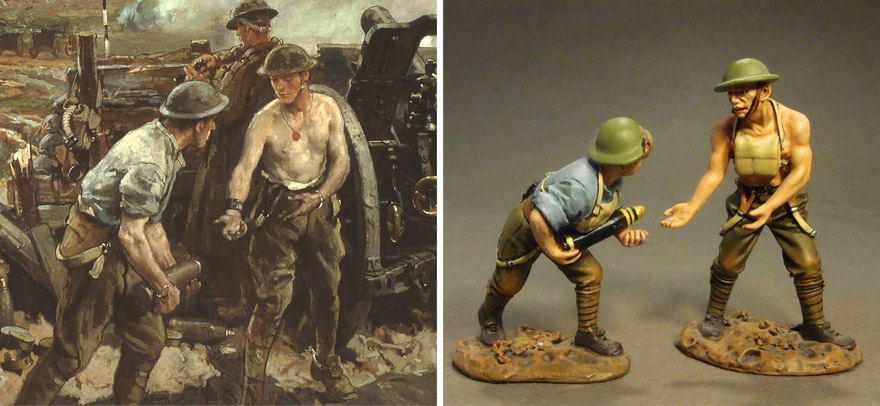
Detail from The Battle of Vimy Ridge (1919) by Richard Jack and the JJ-GWB-46 - 2 Artillery Crew by John Jenkins Designs.
After the war, a portion of the battle site was designed to house the Canadian National Vimy Memorial. This monument, created by Walter Seymour Allward and inaugurated in 1936, is dedicated to the memory of Canadian Expeditionary Force members killed during the Great War. During the Second World War, it was feared that the monument would be destroyed, but luckily Adolf Hitler was apparently very fond of it. He claimed that he liked the peaceful nature of this monument and was even photographed while touring France in 1940.
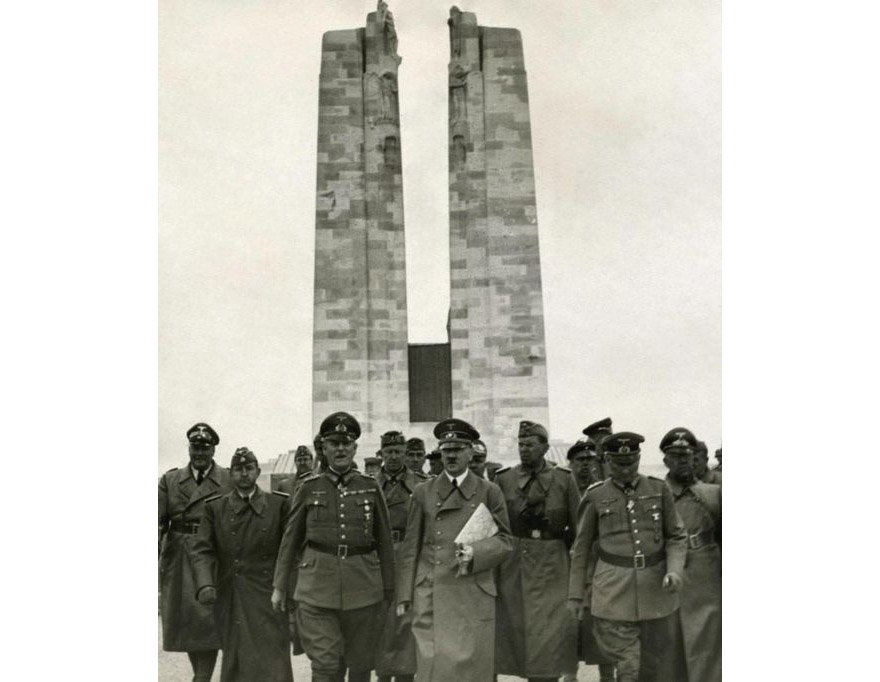
Hitler at the Canadian monument in early June 1940.
The monument still stands today, untouched despite the events who ravaged Europe between 1939 and 1945. However, this monument requires restoration once in a while. To help in this, the canadian clothing business Red Canoe created a commemorative Vimy cap where the monument is visible on the front while the four colors of each division of the Canadian Expeditionary Force are displayed on the left side. For each sale, a part of the profit is sent to the organism taking care of the Canadian National Vimy Memorial. I now leave you with a link for the cap here, in case you would like to get one and help in keeping the monument standing.
The Vimy Cap by Red Canoe, available here.

 Français
Français
